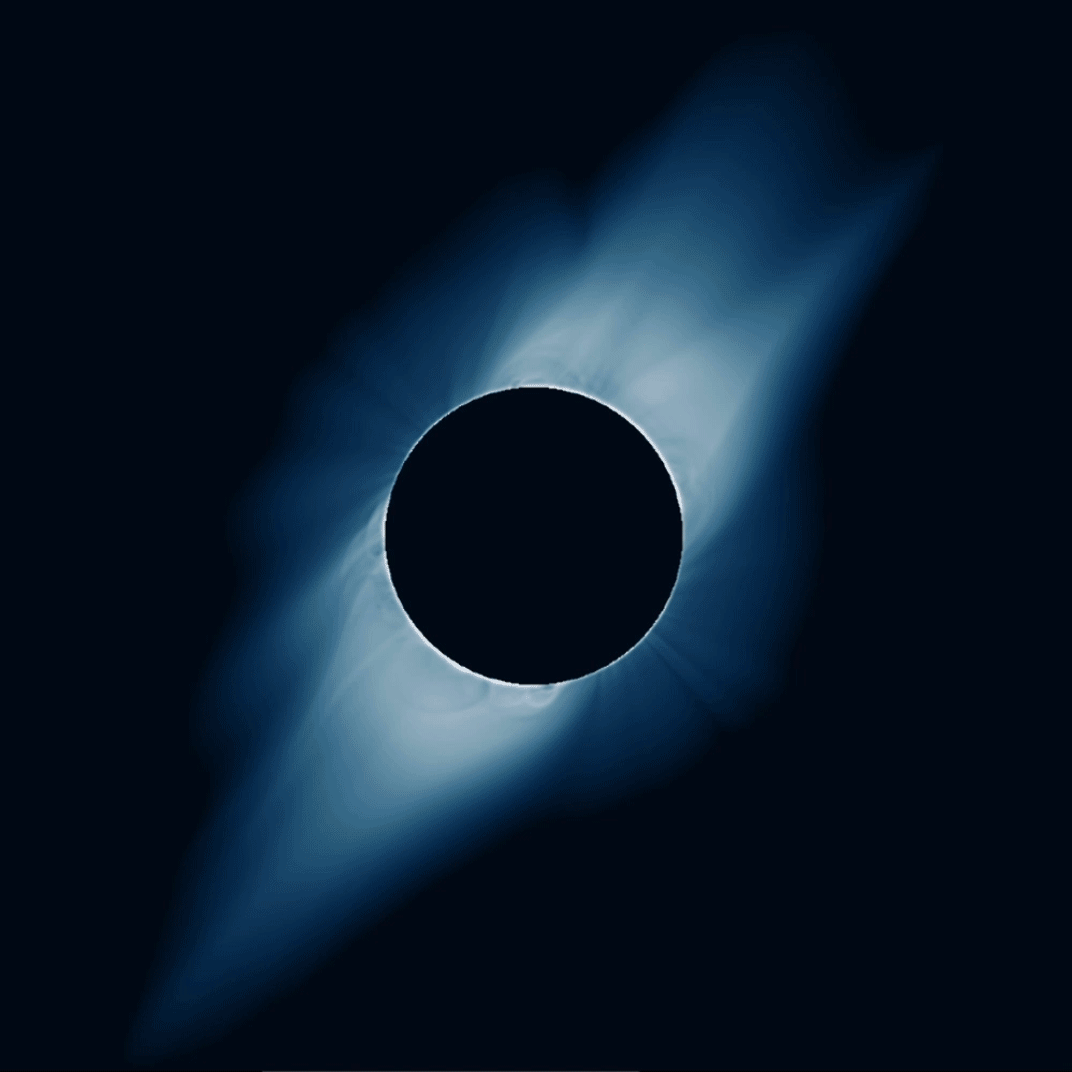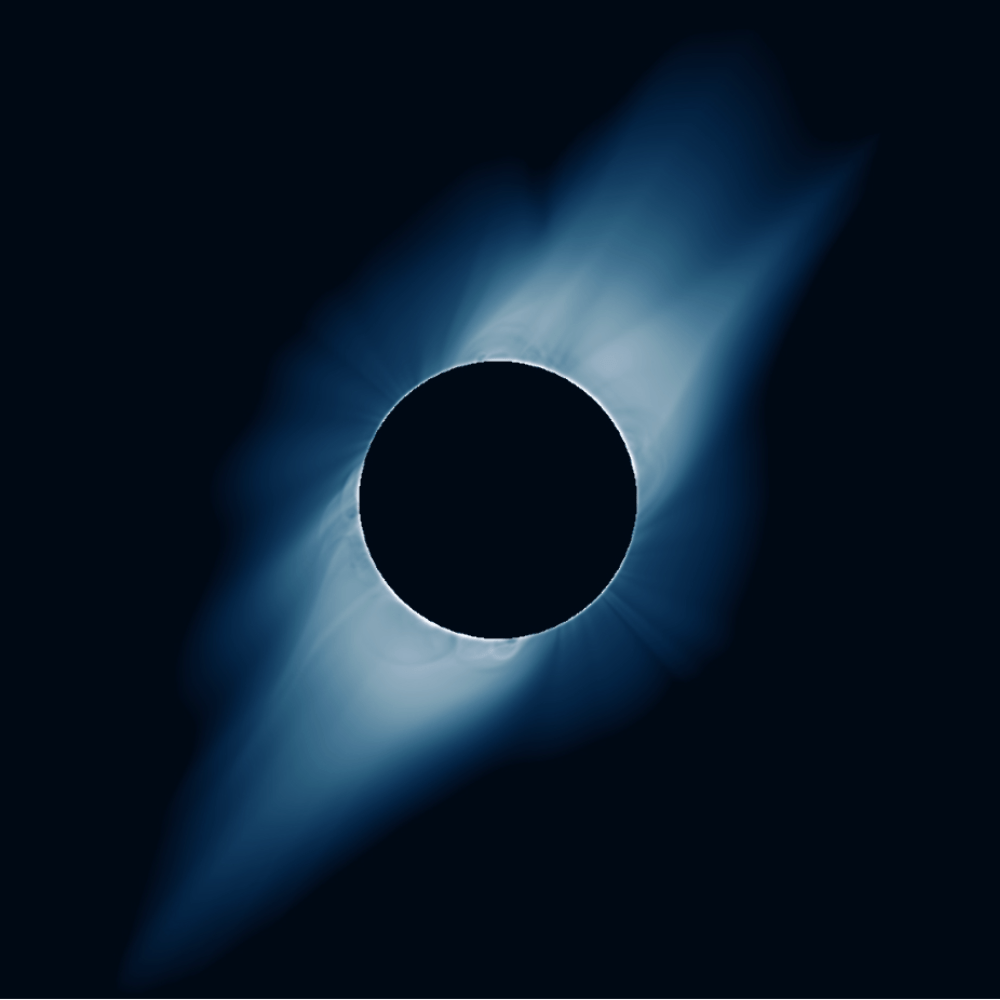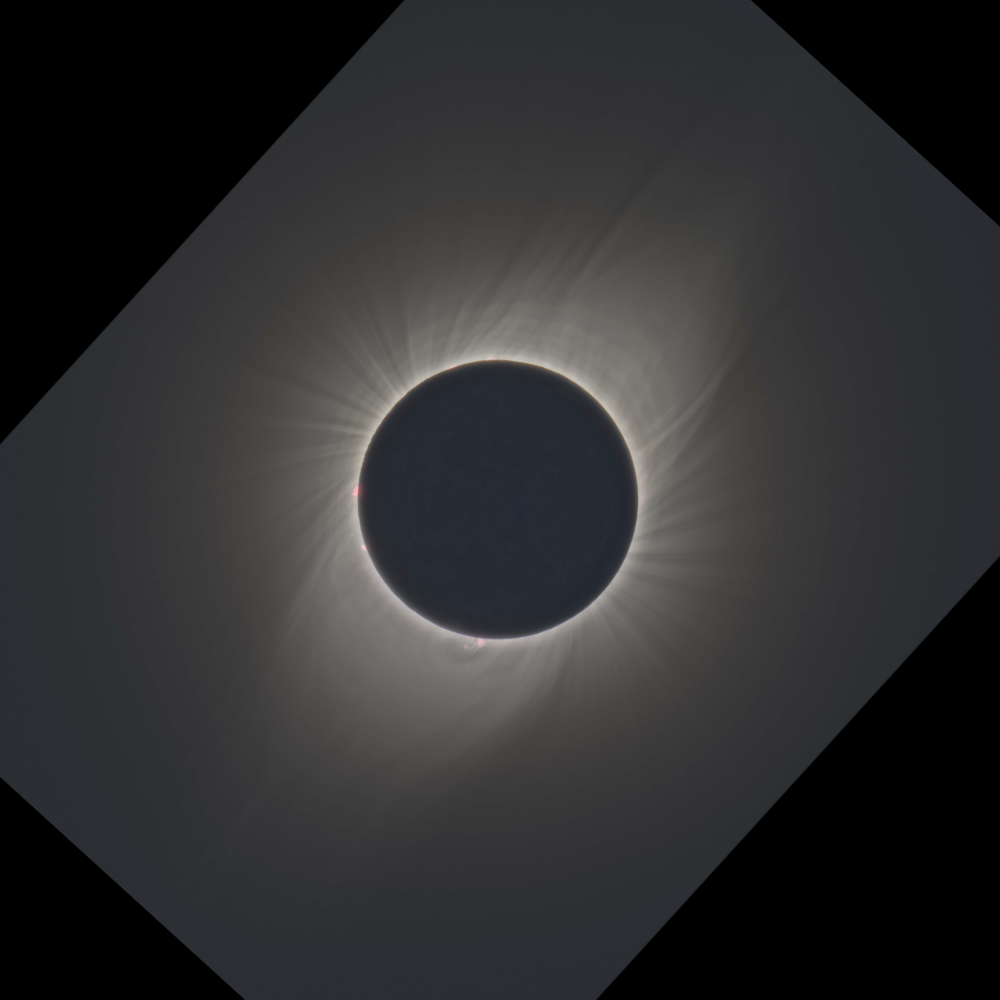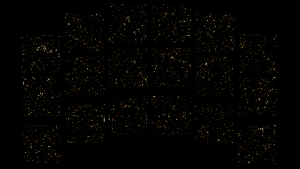
As sunset drew near on July 2, 2019, thousands along a ribbon of land stretching across Chile and Argentina looked to the skies, waiting for the Moon’s shadow to cast them into momentary darkness. They knew a total solar eclipse was coming, and counted down the seconds.
But a small group of scientists were eagerly watching for a different reason. They already had an idea of what the eclipse itself would look like: Days before, using NASA data, they predicted how the corona — the Sun’s pearly outer atmosphere — would actually appear from the ground. They were impatient to see how their prediction held up.
Predicting when and where a total eclipse will happen is straightforward. But eclipses are also an opportunity to test the ability to make much more complex predictions of the ever-changing structure of the corona, which sends superhot gases — called the solar wind — gusting throughout the solar system. This constant outflow shapes the dynamic space conditions we call space weather. Modeling the corona is a crucial part of better understanding and eventually predicting space weather, which affects satellites, astronauts, and everyday technology, like radio and GPS.
By comparing their prediction to eclipse photographs from the ground, the researchers could assess and improve the performance of their models. Their predictions also enabled some eclipse scientists to focus the targets of their experiments in advance.
Predictive Science Inc. — a private computational physics research company based in San Diego, California, and supported by NASA, the National Science Foundation and the Air Force Office of Scientific Research — used data from NASA’s Solar Dynamics Observatory, or SDO, New Mexico State University and the National Solar Observatory to develop their prediction. Over roughly two days, the group primarily ran the model on the Pleiades supercomputer at NASA’s Advanced Supercomputing division at the agency’s Ames Research Center in Silicon Valley, California.
Their model uses SDO’s measurements of magnetic fields on the Sun’s surface to predict how the magnetic field shapes the corona over time. This year’s version was a refinement of the complex numerical model the group used to predict the eclipse in August 2017.
The researchers’ 2019 prediction features a nebulous corona, with two wide, hazy streamers opposite each other, and smaller plumes sprouting out of the north and south magnetic poles. The simulated corona’s lack of definition is likely a result of the current state of the Sun’s magnetic field, which is characteristically weaker during its current march toward solar minimum, the relative lull in its natural 11-year cycle, said Predictive Science researcher Cooper Downs.
“I’m thrilled,” Downs said after the eclipse. “The Sun cooperated, and the streamers were in the right place. Of course, as a scientist, I’m already looking at the details we got wrong and where we can improve. But it’s fantastic to see there will be quality scientific measurements that we can compare in detail to, and much to learn from that comparison.”
Downs felt confident after his team published their final eclipse prediction on June 25, one week before the eclipse: During solar minimum, the Sun evolves slowly, and the team had the benefit of solid real-time observations upon which to base their models.
This year, the team partly focused on improving their modeling of the Sun’s polar magnetic field, which strongly influences the shape of the corona during solar minimum. Scientists use models to estimate the magnetic field at the Sun’s poles, since they don’t currently have measurements there.
The resulting prediction sported fine jet-like features, shooting out from the Sun’s north and south poles like wispy hairs. The European Space Agency’s Solar Orbiter, scheduled to launch in 2020, will have a unique view of the poles, filling an important gap in our understanding of the Sun.
Another spacecraft is already swooping through the corona, seeking to answer fundamental questions about the Sun, such as why the corona blazes much, much hotter than the solar surface below, or what powers the solar wind to supersonic speeds.
NASA’s Parker Solar Probe completed its second close approach to the Sun in April, and is preparing for another in September. Over time, Parker Solar Probe inches closer to our star, collecting valuable data that works hand in hand with solar models. Predictive Science also makes predictions of what the spacecraft sees during solar flybys.
“Each time Parker makes a perihelion, we get measurements of the magnetic field, plasma and solar wind speed,” Downs said. Good observations improve models and vice versa. “Models will be an essential way of interpreting that data, and this data will be essential for constraining and refining the models.”
By Lina Tran
NASA’s Goddard Space Flight Center, Greenbelt, Md.





























